
#256
SHINE ON YOU CRAZY DIAMOND
09 Nov 2015 By David Fuhrmann-Lim
Like the Mortlach whisky that she extols, Georgie Bell, the brand’s luxury malt ambassador, is also a strong character, chock-full of awesome whisky bits, and a stylish modern looker. We talked whisky, road trips and how to drink the dram.
Parched confession: When asked if we knew anything about Mortlach whisky, we had to humbly shake our head, we couldn’t even feign a glib pretense. But turned out of course that Mortlach, like cult film director Roy Andersson, is a bit of a secret, is loved by enthusiasts, and in the past year has had a bit of a renaissance. So we didn’t feel so bad. To fill in our knowledge gap, we quickly arranged for an interview with Georgie Bell, their Scotch brand ambassador. She gave us a history lesson, some drinking tips, and helped plan a future road trip. Oh yes, we drank some whiskies as well.
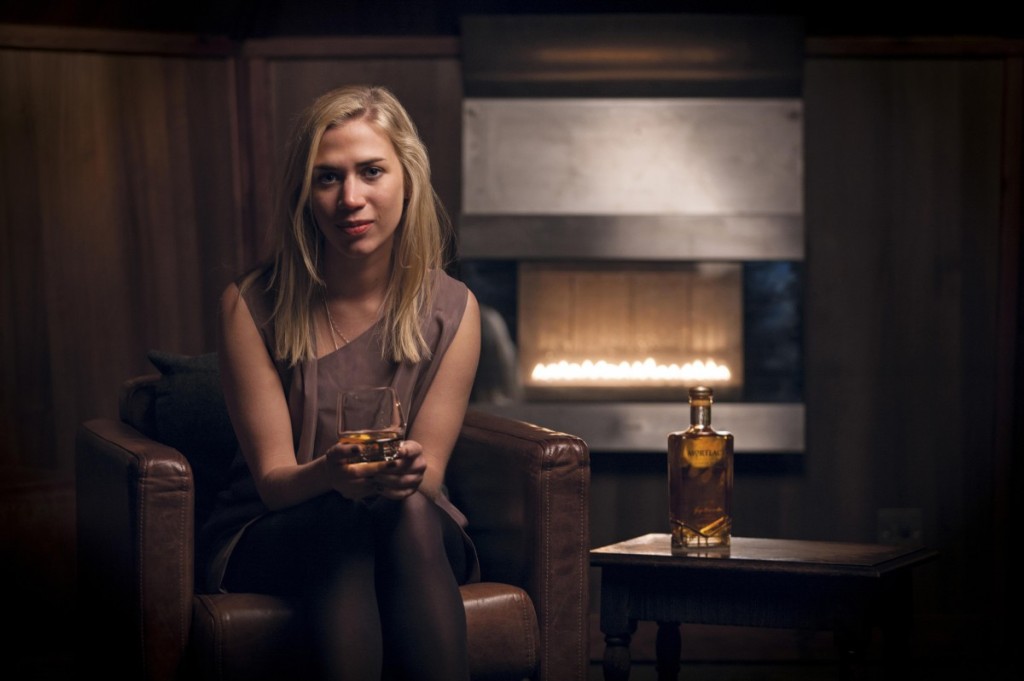
What was the significance of the timing of the launch the three luxury whiskies (Mortlach Rare Old, 18 years, 25 years) in 2014?
GB: Mortlach for decades has been highly regarded by whisky enthusiasts, and it’s always been a little bit of a secret up to then, a secret weapon for blenders. And they just felt that now is the time to give the distillery the recognition and spotlight with the launch of the three luxury malts last year and it’s just now happening this year for the rest of the world.
When you say it’s a “secret weapon” for blenders, could you elaborate?
Yeah, just to give you a little background to the distillery. It was founded in 1823, in the heart of Speyside. And usually when you say Speyside you think of whiskies that are quite mellow, quite fruity, quite floral from that region. But Mortlach as actually been nicknamed “The Beast of Dufftown”, because the whisky that comes from the distillery, it is thick, it is muscular, it is meaty, it’s richer and darker, it sorta harks back to the time when whisky once was very traditional, with heavy character, and that’s unique to the distillery because it comes from the distillery process.
And so in the past, it was the only distillery that created this robust muscular character, it’s been integral to our brand, and it’s also been going to the world’s finest blends, and within the blends it’s considered the top dresser and it’s their secret weapon it adds body, it adds spine, adds that certain je ne sais quoi, into these blends, and actually, it’s testimony to the brand that Johnny Walker bought the distillery in 1923. And at the time they only owned one other distillery, Cardhu, which shows how important they thought it was to add Mortlach to their house portfolio.
Could you then explain the 2.81 process?
In malt whisky production, we essentially make a strong beer and we distil it – Whisky 101. And to distil it we run it through sets of copper pot stills, a wash still and spirit still. Now in most distilleries in Scotland, the wash stills will be the same size, and the spirit stills will be the same size, and you may have three of each in your still house, and they’re all producing the same spirit at the end of the day.
Not at Mortlach. At Mortlach we had a distillate process put together in 1896, by Dr Alexander Cowie, and it’s still there today. And essentially we have six stills, and they’re all different shapes and sizes, and they all pretty much work independently from one another. In essence it’s almost like having three distilleries in one still house, because the end game is that we create three different spirit characters, underneath the still house, which we then blend together. The 2.81 comes from this distillation pattern, and the creation of these three strains specifically.
Why don’t other distilleries adopt this method then?
It’s inefficient for a start, but it works for us and it’s really responsible for creating the thick robust character. On top of the production process, distillation process, we also have different warm tub condensers, and again they help enhance the really rich, muscular distillery character which is so beloved, and so crucial in framing each of the different expressions.
[It was time to drink whisky. We started with the Rare Old, which was very robust, yet floral and complex as well. It’s also got orange blossom notes – from the Spanish sherry casks, has vanilla and toffee from the bourbon casks, and is a bit viscose.]
GB: For each of these expressions, what we really wanted to do frame and showcase the distillery, in different guises, their character of it being rich and robust is really important to us, and so Dr Matthew Crow, the Mortlach malt master, has thus created three different whiskies, three different expressions, showcasing what the distillery can be, so they’re almost like a family of whiskies, within one, with different gradiences of cask types.
So Rare Old is very much my late afternoon style of whisky, it’s quite autumnal, quite warming, lots of caramel coming through, very sweet.
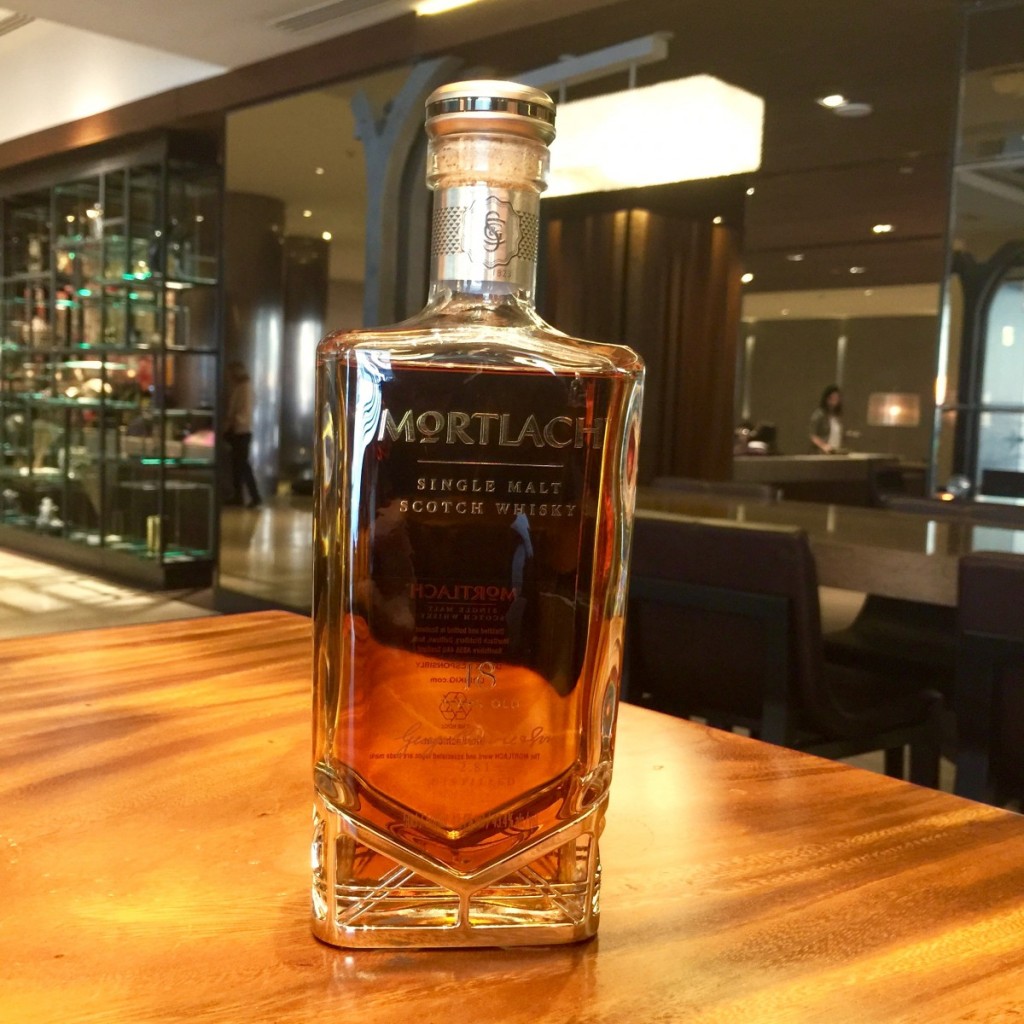
[We drank the 18]
GB: Mortlach 18 however, is richer, and deeper, and darker, because one of the main type of cask it’s put into is a sherry cask, so if you pick it up and give it a smell, you’ll realise there’s loads of chocolate notes, you get tobacco, burnt toffee, there’s a little bit of coffee coming through as well, and dried orange peel, some spices. It has a very decadent, very suave and rich finish.
It’s good, lovely, I love it, it’s er, mmm, it’s almost too good to describe (was at a loss for words), it’s really just rich and it doesn’t linger as much as the Rare Old…
GB: Almost a different beast entirely to the first one. It just grows, it just keeps getting bigger, underneath it all it has this muscularity about it, it’s not an overly sweet whisky, there’s a savouriness and meatiness about it. I like it straight up, and it goes really well with dark chocolates, and one way we’ve been drinking Mortlach recently is with charcuterie boards. It’s got a different mouth fill about it, there’s a lot more tannins there, like you get in red wine or black tea –
– and it’s a lot more bitter as well –
GB: – you get the tannins coming through; it’s not as sweet, as I said it’s a lot more suave, with a very high cocoa percentage. As I mentioned before, their reputation at the distillery is sorta the shining light over the past few decades, and now these liquids are coming to light, and they’re getting global applause, we’ve actually been winning gold medals for them left right, which is absolutely fantastic. Mortlach 18 actually won one of only two gold medals at the Berlin International Spirits competition in 2015, all of the whiskies won gold at the San Francsco Spirits Competition, and both the 18 and the 25 have 4.5 stars out of 5 in Diffordsguide.com
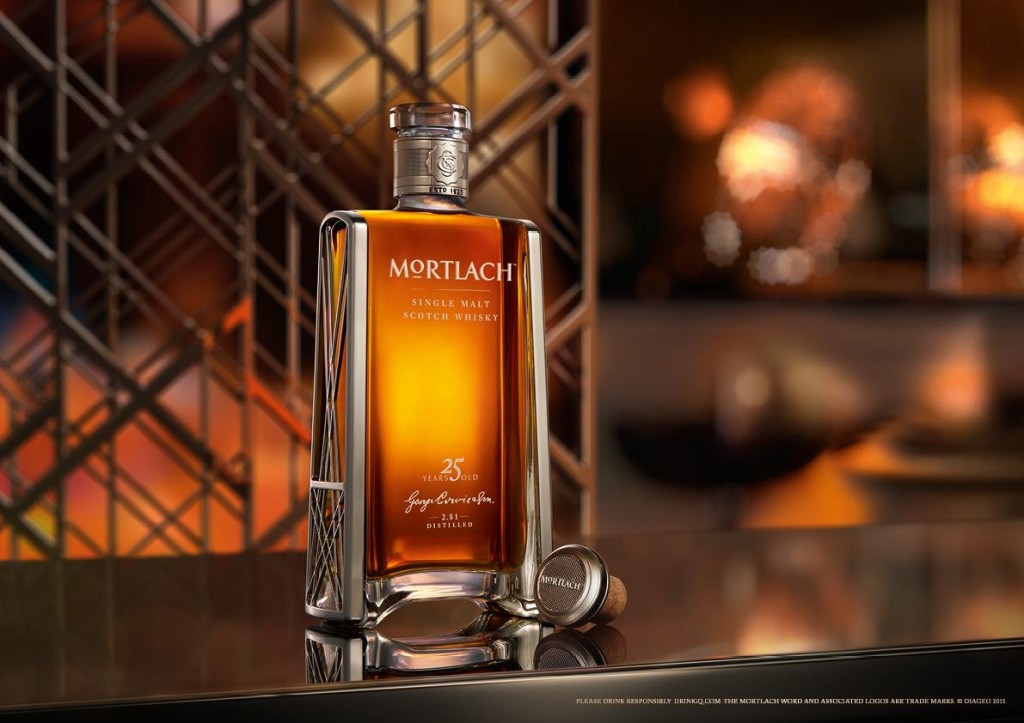
And are these all new designs for the bottles? It’s very modern and stylish.
GB: Yes the bottles. As I said, Mortlach has a very rich heritage, and I mentioned about Dr Alexander Cowie, his father George Cowie is the one that really sewn up its reputation with epicureans. He joined the distillery in 1853, and he kinda started up this network of customers, but before joining he was an engineer, during the Victorian age – the golden age of engineering.
So we decided to honour this engineering prowess with the bottle design, they were designed by a New York agency called Raison Pure, and they actually won double gold medal at the San Francisco Spirits Competition this year for the bottle design, the ultimate winner. They take their inspiration from Victorian architecture, so you can tell from the metal structure, very reminiscent of bridges. And they can be used as decanters, you’d be proud to put that on a table, at a party.
If someone were to plan a roadtrip in Scotland, where would you recommend they go? Let’s say they have a week, and that’d already include a few days in Islay.
I would say fly into Edinburgh, it’s my hometown so I’m a little bit biased, but we have amazing cocktail bars in there, and they’re using Scotch in their cocktails. But places such as Bramble which is award-winning, and also a new whisky bar there that’s just opened called The Devil’s Advocate, and after that I’d say drive up to Glenkinchie which is the Edinburgh distillery (40 mins), and it’ll start your trip off in style. And you drive along the East Coast, the landscape is beautiful, it’s mesmerising.
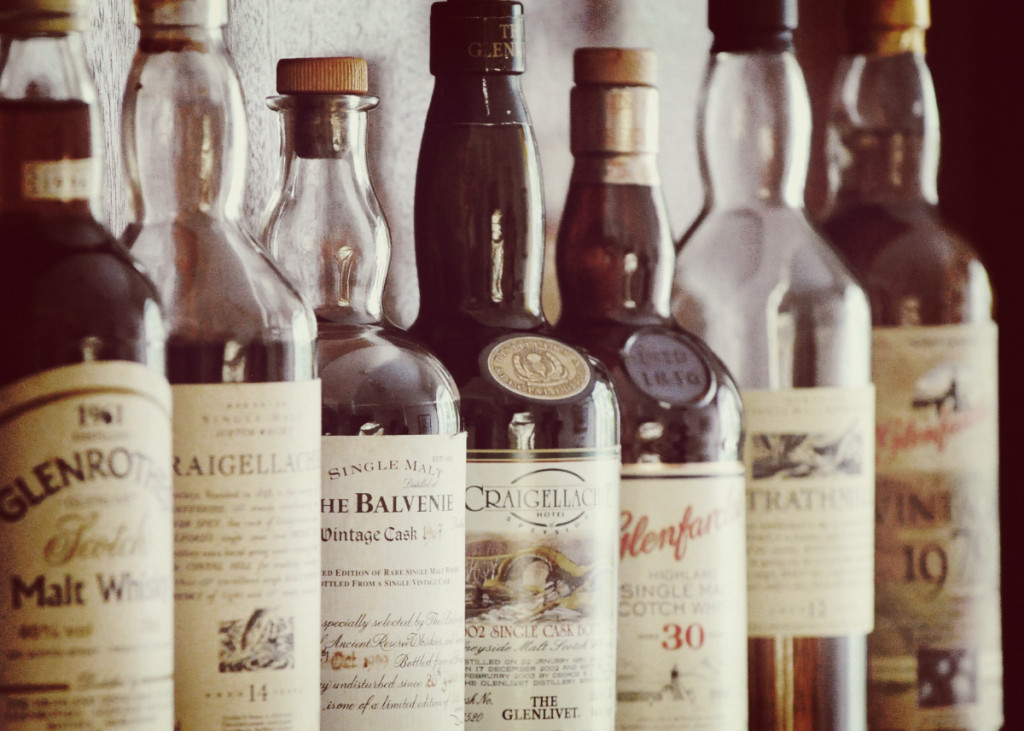
The Quaich bar at Craigellachie Hotel
After that I’d drive up the A9, pass Dalwhinnie, it’s the highest distillery in Scotland, and often during the winter months it gets completely snowed in. After that I’d drive up to Pitlochry, it’s a beautiful little village just before you get to Dalwhinnie. And after that I’d go to Speyside, stay at the Craigellachie Hotel, it’s just recently been done up and they have an amazing whisky bar there called The Quaich Bar. Speyside is your playground, there’s Cardhu, the home of Johnny Walker. I’d spend a bit of time there, maybe some outdoor pursuits, the fishing on the River Spey is quite exceptional. And also whisky is about making memory so try getting a dram outside somewhere. When in Speyside I’d say go to the cooperage to see how the casks are made.
After that’s I’d try to drive over to Skye, pass Loch Ness, that’d be about a three-hour drive but it’s stunning, I’d also go to Talisker, the view is absolutely astonishing, you really are in rugged wilderness there; you’ve got the mountains around the distillery.
I don’t really believe there’s much terroir when it comes to whisky production, however, when you’re sitting in Talisker with that beautiful maritimey, sort of slightly salty, smoky notes, on the shore of the Loch there, watching the sunset – it’s really spectacular. There’s also an oyster hut round the back of the distillery, and if you have an oyster and pour a little bit of the Talisker in there, it really is magical.
So spend a night in Skye – and after that I’d go to Islay. That would be my suggestion for a week’s tour. And make sure you have some black pudding along the way, some Cullen skink (soup with smoked haddock), porridge ‘cos you’re gonna need it cause it’s gonna be cold.
Are there other whiskies that you also really love?
There’s a time and a place for every whisky. I really love the whiskies from Clynelish, it has this beautiful, almost waxy character about it, it’s very perfumed, I love Clynelish. The Cragganmore Distiller’s Edition is high on my list. [Parched added two more names to our Must-Buy list]. I do love a heavy peated whisky, so something like the Lagavulin 16 is actually incredible. Talisker Dark Storm and Talisker Storm are both great, they’re both slightly richer and darker which I really like when it gets colder outside. And they also go really well in cocktails. And I’m also a big fan of Johnny Walker, Blue Label.
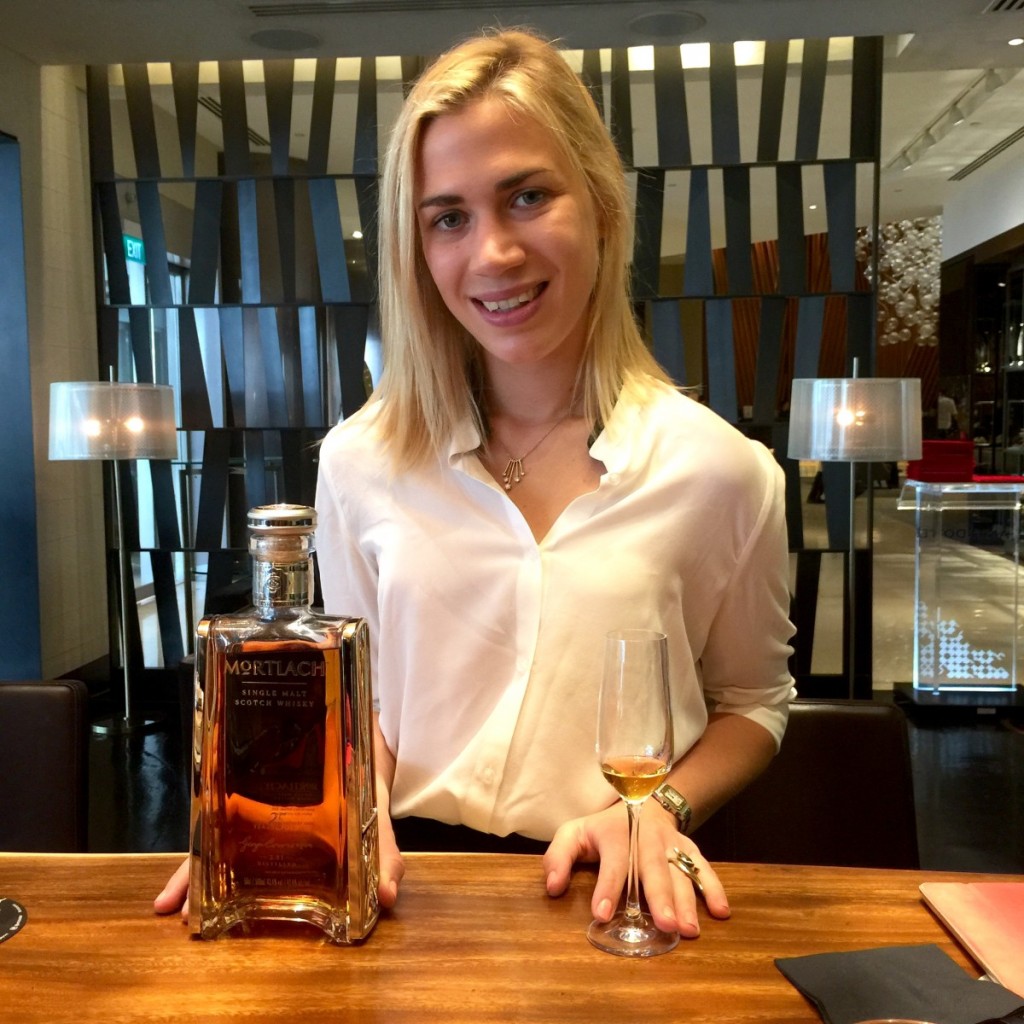
[We drank the 25]
GB: A cask that’s too over active, after 25 years your whisky can come out tasting of wood. And if you put your whisky into a cask that’s too under active, you’ll come out with a whisky that hasn’t matured at all. But we hit lucky, we found a bunch of refill bourbon barrels that betrayed an elegance, and a decadence and sophistication unlike any other whisky I’ve tried before. I was familiar with Mortlach, and I’ve tasted it in various guises, but I’ve never tasted it with an elegance and lightness of touch as this one.
The nose: It’s perfumed, slightly waxy like candlewax, very therapeutic in that way. You get the vanilla notes coming through, orange blossom, Earl Grey tea, jasmine tea.
This one is my Krug whisky. I’ve only had Krug three times in my life, and every single time it was there to mark a special occasion, and that’s why the 25 is my Krug whisky. And when you give it a taste, it’s not as delicate as you think. You get the white chocolate notes coming through, orange… For me, it’s got an incredible long finish, the flavours keep growing. After you’ve swallowed, you get these additional flavours that start releasing themselves.
We actually won Global Whisky Launch of the Year last year in Drinks International Magazine, and I think it’s because of this whisky that we won. Because every single time anyone’s tried it, they’ve gone “wow”.
I can see it placed perfectly here in Singapore, there’s a gap, having Mortlach going into the market last year, around the world, there has been this anticipation and longing for it here.
For Parched, the 25 was a remarkable, roasty and robust spirit, like a UFC bout, but where you always come out the winner. Add just a few drops of water to let the complexity unravel. The interview kinda ended then, but we got Ms Bell to give us a few more tips:
On whisky as a sociable thing:
GB: People use whisky to mark an occasion. It’s very much a spirit that marks kindred spirits, in Scotland there’s a big emotional attachment to it, it’s in the culture, the way it’s produced.
I’m a bit of a self-confessed whisky geek so I like the distillation side of it, it’s the culture, it’s the heritage, the history, the way that it travelled around the world, to become one of the world’s most beloved categories, and what it stands for for people as well.
On adding ice to whisky:
There are many different occasions to enjoy whisky. On a sunny afternoon you might not way to drink it straight up, but instead with a big block of ice, is a nice alternative. The ice, just like when you keep a big block of gin in the freezer, when you pour it out it’s got that same kind of texture, same as when you pour it out you have a big block of ice in your whisky, it opens up the base notes.
It freezes up the top notes, which becomes heavier, and richer, and by doing that it also increases the base notes, the viscosity, so the whisky will get even thicker inside your mouth.
On tasting whisky:
I’d say hold it in your mouth for a few seconds. I’d say more importantly, when you take a sip, think about it. Think about what you’re tasting inside your mouth, rather than just drinking it. Think about the flavours that are there. I’d say smelling is very important, having a look at the texture through the glass. And once you’ve swallowed it, think about the taste, and the finish, the texture – does it feel thick on your mouth, does it feel quite light, and how the flavour develops over time, does it get sweeter, does it get bolder, has it got a long finish, or short finish?
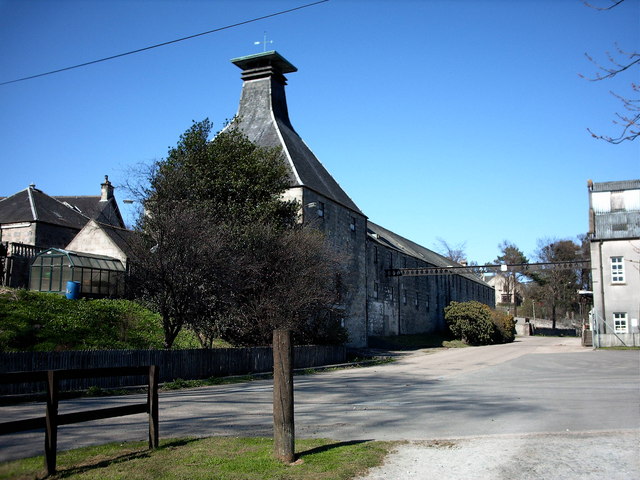
More tasty Mortlach notes…
• William Grant, who founded Glenfiddich, trained at Mortlach. Glenfiddich was the second distillery in Dufftown, and Mortlach was the only distillery for 60 years.
• The distillery is expanding its production, going from 3.7 to 7.4 million litres.
• Each bottle is 50 cl, rather than 70, “due to the limited supply of this unique liquid”.
• Each of the three is 43.4% ABV. The reason for this is Mortlach also has a relationship with Macy’s in NY, and in early 1900s, it was the in-store whisky for Macys, and it was being shipped over at 86.8 proof (which is 43.4%) so even the strength is an homage to the past.
Like this? Here’s The Balvenie’s global ambassador Sam Simmons on his fav drams

You might be interested in...
DRINK THIS: 2024 TSUKURIWAKE SERIES
The Combo of Suntory’s Tsukuriwake Series 2024 and Takayama’s Elevated Omakase is a Pairing Made in an Aesthete’s Heaven.
GRAIN & GRAPE
Auchentoshan Breaks New Terroir With Their Limited Edition Sauvignon Blanc-finished Expression
DRINK THIS: GLEN GRANT 60 YEAR OLD
Worth the Wait.
DRINK THIS: 2024 TSUKURIWAKE SERIES
GRAIN & GRAPE
DRINK THIS: GLEN GRANT 60 YEAR OLD